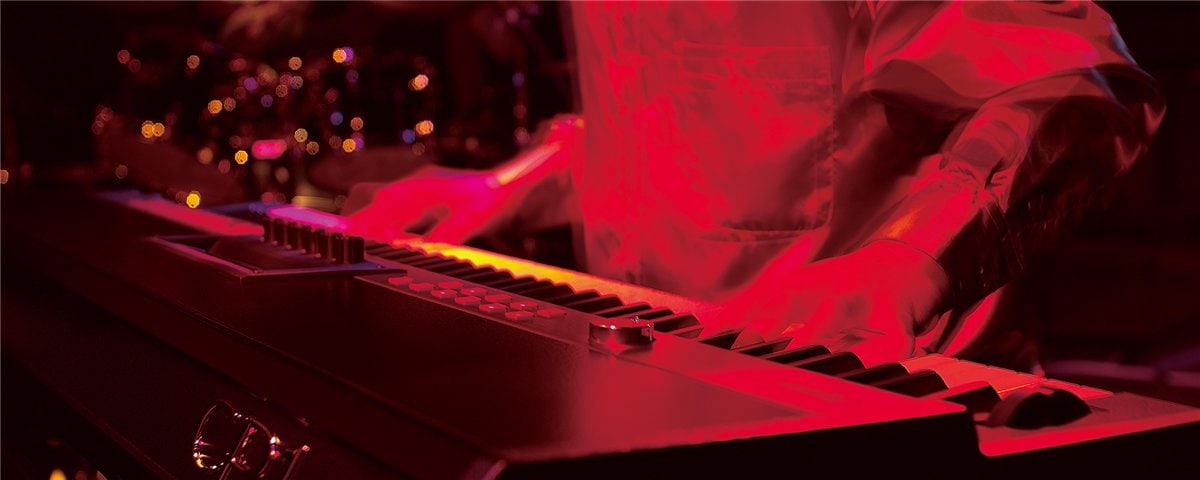CP Series
Interview2
Developer Voice
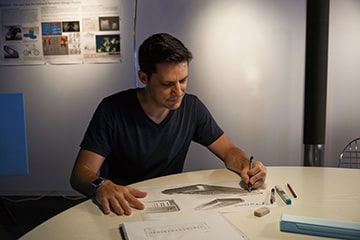
Product Designer Jose Gonzalez
What was your design intention?
We knew when we started to design the new CP4 and CP40 that we wanted to create a timeless musical instrument. So we asked ourselves how a stage piano could remain relevant after a normal product lifecycle. Our desire was for players to enjoy it for a really long time.
For that reason, rather than following temporary, transitory trends, we decided to look at the legacy and heritage of Yamaha. We noted which design traditions are in Yamaha’s DNA, and we took those and adapted them to fit the new CP. We believe that as a result, the CP STAGE will have a long lasting design.
At the same time we wanted to provide players with an elegant musical instrument that can be used on any stage. Therefore, in order to make the new CP adaptable to a wide variety of environments, we decided that the design of the new CP should not be gaudy, obtrusive or particularly striking. But some attractive details were needed, so we decided to focus on the silhouette, with a small beveled edge that surrounds the piano to draw attention to its contours on the stage—especially under spotlights.
How did you balance "legacy" with "new"?
We created this balance by putting some legacy elements (like leather or cosmetic, textural appearance) with some other electronic and digital elements. Everything in harmony! But how do we find that harmony? It comes from the creative process—it means sketching many ideas, creating mockups, researching and analyzing our ideas, and working to improve the initial ideas from the first stage to later stages in greater detail; checking sample materials, paint color, textures… we made many renderings, mockups and prototypes to be sure that this “balance” that we were looking for is obvious and present in our final design.
What are the characteristic design features of the new CP4 and CP40 for the stage?
Considering it is an instrument that will be played for hours on end, we wanted to offer a completely unique and expressive experience for using and playing the new CP. It was so important that we incorporated a diverse range of textures and materials into the design. So we decided to adapt a different texture for each area. The background texture is leather-like, complemented by a nice matte finish on the control panel, followed by a long silvered line that divides the body from the keys. And finally, the CP’s incredible “piano touch” keyboard.
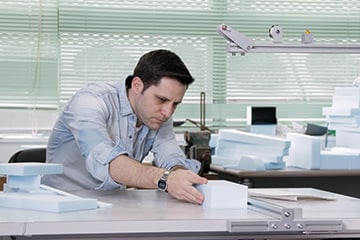
What was the development process like?
After deciding on the design direction, the team worked very closely for almost 2 years with the engineers and other developers, taking into consideration the proportion and harmony of all the elements of the stage piano, and of course trying to create a simple user interface for instant access and easy use.
Do you have any additional comments for the players?
In short, the CP4 and CP40 are stage pianos with a timeless design that will allow musicians to enjoy them for many years. They are instruments that can be used on different stages or locations. These pianos are the product of our passion for designing and developing the best instruments we can, and we hope that this is reflected in how much people enjoy playing and performing with them.
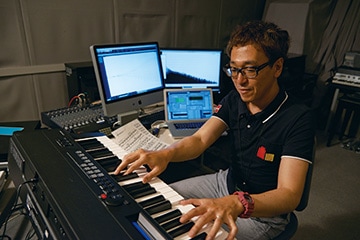
Sound Engineer Fumitsugu Ohtaka
What was your aim when developing the CP4 STAGE?
We wanted to enhance our piano sounds and make the CP4 STAGE a key instrument for live performances. Yamaha has focused on developing acoustic and electric pianos that produce high-quality sound. For the CP4 STAGE, we not only worked on sound quality but also paid close attention to the playability of the keyboard. In that regard, we took advantage of the performance qualities of wooden keys, a new feature in the CP series. Our aim was to design an instrument that allows players to directly express themselves.
What was your approach to developing the CP4 STAGE’s sound?
First of all, we tried to recreate the timbre of the CFX, Yamaha’s new flagship concert grand piano. The sound of the CFX is simply stunning. It is a highly expressive piano that produces a rich, harmonic spectrum and spans a wide dynamic range from pianissimo to fortissimo. This is a piano that completely captures the subtlest variations in keystrokes.
Yamaha worked hard to realize these qualities for the CP4 STAGE. We greatly expanded the waveform data used compared to our previous models, and enabled smoother keyboard control over changes in timbre.
The CFX is an incredibly versatile piano suitable for all kinds of musical styles, from classical and solo jazz to pop and rock. The CFX is featured in the CP4 STAGE as one of three grand piano presets, each featuring a different character. The other two presets are the Yamaha CFIIIS, a popular model that has earned a strong reputation, and the Yamaha S6, which is known for its distinctive warm and woody sound. There are many different presets for these pianos, featuring stereo or mono sounds, different effects, and different brightness settings, allowing the instrument to be used in all types of performance situations.
The CP4 STAGE also features electric piano voices from Yamaha’s famous instruments like the CP-80 piano and the DX, RD, and WR series of keyboards . We used our best modeling methods to reproduce the sounds of each of these instruments and enabled seamless and smooth changes in timbre depending on the force of the keystrokes. The CP4 STAGE features parameters that represent the physical attributes of acoustic pianos, including the stiffness of the hammers and the points where they strike the strings. This lets players adjust the timbre in the same way they would with a real piano.
The CP4 STAGE is loaded with high-quality effects based on Yamaha’s Virtual Circuit Modeling technology. We made full use of digital modeling and paid careful attention to every detail of the pre-amp design. The modulation effects are extremely well suited to electronic pianos and reproduce a wide range of sounds.
The CP4 STAGE comes with preset sounds that are useful for many kinds of live performances. Players can select from “performance” presets comprising layers of acoustic pianos and strings, acoustic and electric pianos, or synthesizer pads, as well as instrument ensembles commonly used on stage, such as brass or strings.
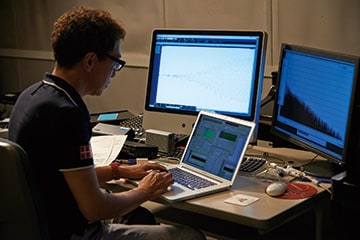
Could you comment on the playability of the CP4 STAGE?
We developed many expressive voices for the CP4 STAGE, including the CFX piano voice. We also equipped it with a highly playable keyboard, using wooden keys for the first time in the CP lineup. By effectively combining these features, Yamaha has created a remarkable musical instrument that allows piano players to directly express themselves. We accomplished this by devoting much more time than usual in product development to perfect the playability of the instrument. That involved setting up prototypes in many different ways and having them tested by leading pianists active in various genres from Japan, the U.S., and Europe. Based on their evaluations and feedback, we decided on the ultimate design. As a result, Yamaha has produced a very playable and expressive instrument.

